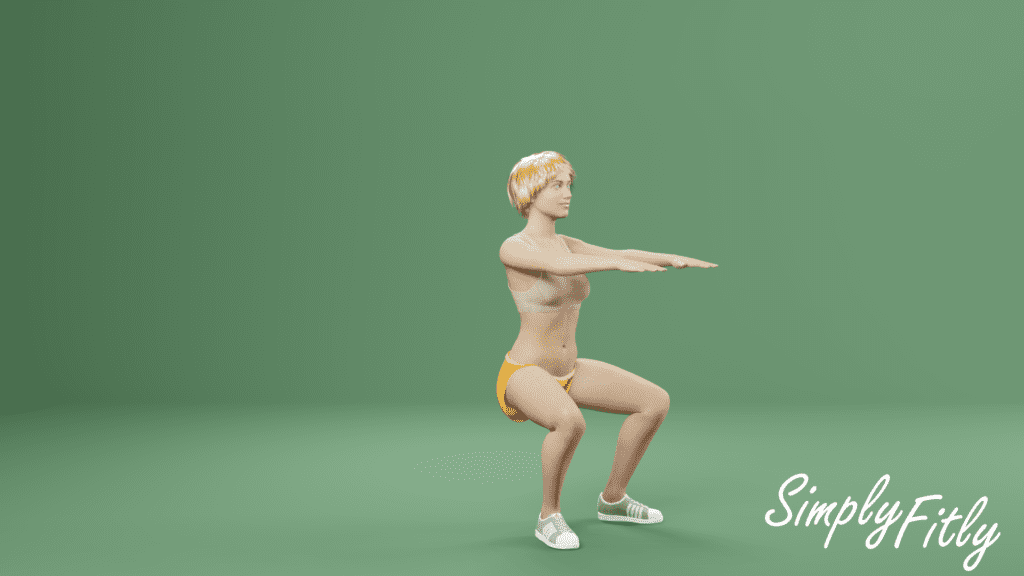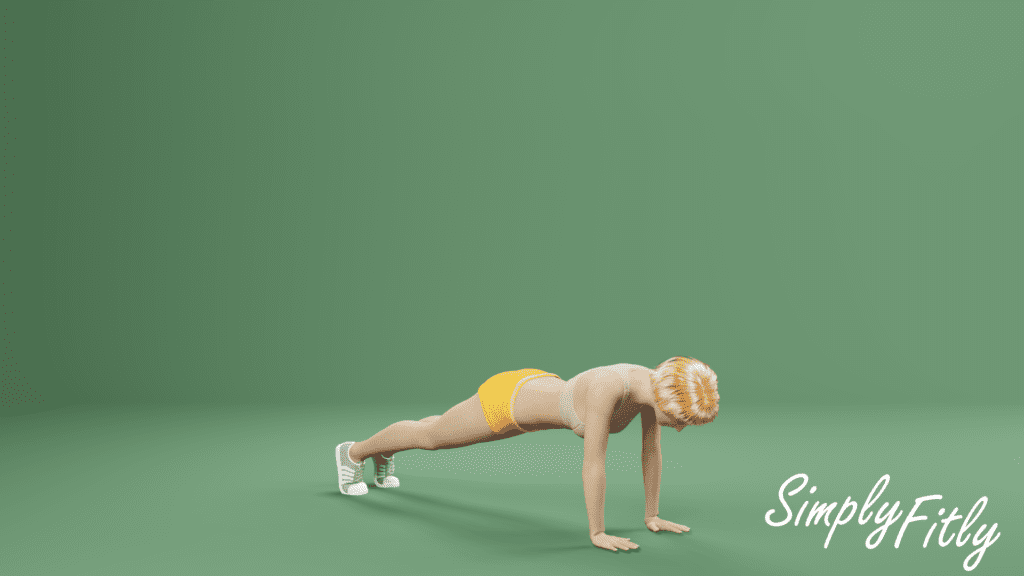



Muscle group: upper body (shoulders, chest), lower body (quadriceps, hamstrings, glutes), core.
Intensity: moderate.
Directions
- Begin in a standing position with your feet hip-width apart, shoulders relaxed, and arms stretched in front of you.
- Lower your body into a squat by bending your knees and pushing your hips back, keeping your back straight and chest up.
- Reach down and place your hands on the floor in front of you. Your hands should be shoulder-width apart.
- Step one foot back, followed by the other, into a plank. Your body should be in a straight line from head to heels. Pause briefly in this position.
- Step one foot forward, followed by the other, so that you return to the squat.
- Push through your heels, straighten your legs, and return to a standing position. Keep your core engaged as you stand up.
- Repeat the exercise for a desired number of repetitions.










Modifications: this is the easiest modification; it is starting point for squat thrusts and burpees.
Mistakes
- Lifting the hips too high: When stepping into the plank position, avoid lifting your hips too high, as this can compromise your form. Keep your body in a straight line from head to heels.
- Hunching the back: Maintain a neutral spine and avoid rounding or hunching your back when transitioning to the plank position. Keep your core engaged for stability.
- Rapid movement: Ensure that your movements are controlled and deliberate. Avoid rushing through the exercise, as proper form is more important than speed.
- Incorrect hand placement: When stepping into the plank, make sure your hands are beneath your shoulders to maintain a stable plank position.
Conclusion
Squat to Plank is an effective exercise that engages multiple muscle groups, providing a comprehensive full-body workout. This exercise transitions from a lower body-focused squat to an upper body-centric plank, making it an excellent choice for those looking to enhance their strength, flexibility, and overall fitness.
By incorporating Squat to Plank into your exercise routine, you can target key muscle groups such as the legs, core, chest, and shoulders. This dynamic movement not only promotes muscle development but also improves balance, coordination, and agility. Additionally, Squat to Plank elevates the heart rate, contributing to improved cardiovascular endurance and calorie burning, making it a valuable addition to high-intensity interval training (HIIT) sessions.
Furthermore, Squat to Plank mimics functional movements required for activities like hiking or sports that demand lower body strength and agility. This exercise can help you build the strength and stamina necessary for such endeavors while enhancing core stability and overall muscle tone.
Incorporating Squat to Plank into circuit training routines is highly effective due to its adaptability. It can be integrated with various strength-focused exercises, providing a balanced combination of aerobic and anaerobic challenges. This versatility ensures a well-rounded workout that targets various fitness goals and contributes to overall physical well-being.
Squat to Plank is an exceptional exercise that offers numerous benefits. Its ability to engage multiple muscle groups, enhance cardiovascular endurance, and promote functional strength makes it a valuable addition to any workout regimen. Whether you’re looking to tone your body, boost your metabolism, or elevate your overall fitness, Squat to Plank is a rewarding exercise choice.